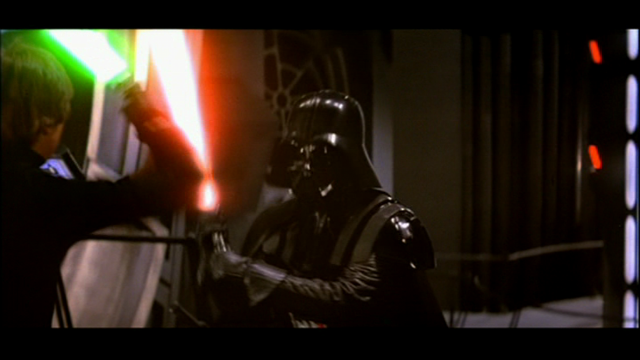bkev said:
While the Han shot looks pretty gray, the shot of Ben and Luke on the Death Star is lookin' blue in csd79's shots. I think at that point it becomes a case of applying his settings to the entire movie and then color-correcting by scene, if anyone has the patience for so.
While the shots have some colour returning to the walls, they still have that drab GOUT look when you see the way a theatrical print looks.
This:

is an excellent "enhanced GOUT", the best I have seen so far, but it doesn't resemble this very much:

Obviously, that isn't exactly what that shot should look like either. But I think you get a sense of the saturation and tonality, and then you look at the shot above it and it's not really the same.
This was my first attempt at it, which is too red, has bad skintones and hasn't had any contrast or gamma tweaking, but it better captures the sense of colour I think. You can see that the walls are clearly blue, not just having a hint of blue in them. I don't think this is how the shot should look, obviously, but probably in between the two is a good place to be.

Csd79 is close, but not quite there, the basic essence in terms of colour is still somewhat elusive. There is a vividness that is still lacking. But he said that was just a first attempt--I would be very interested in what he could do if he spent more time at it. His skintones certainly blows away the lobster-Ben in my test shot above.
edit: this process might be a good place to start.
That's an interesting thought, convert the 2004 master to the 1993 colours and then basically do what we have been doing here. I wonder if screwing around with the colour that much would make things start to look weird though.



















